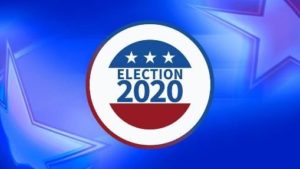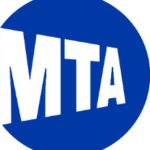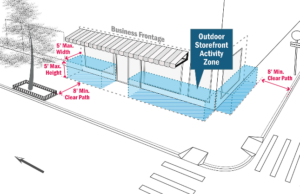In the News – State
 Election Day: Tuesday, November 3rd
Election Day: Tuesday, November 3rd
New York State Poll Information
Election Day Poll Hours: 6 a.m. to 9 p.m.
October 31st & November 1st Early Voting (times vary by location) Find your Early Voting & Election Day Voting Places Here
 New York State Voting Leave Rights
New York State Voting Leave Rights
Employees in New York State are eligible for up to two hours of paid time off to vote if they do not have “sufficient time to vote.” An employee is deemed to have “sufficient time to vote” if an employee has four consecutive hours to vote either from the opening of the polls to the beginning of their work shift, or four consecutive hours between the end of a working shift and the closing of the polls.
An employee must notify an employer at least two working days prior to their intention to take paid time off to vote, but not more than ten working days.
 DOH’s Cannabinoid Hemp Program Regulations Released
DOH’s Cannabinoid Hemp Program Regulations Released
Governor Andrew Cuomo this week announced that the New York State Department of Health has filed proposed regulations to regulate cannabinoid hemp products in New York State.
In accordance with legislation signed earlier this year by the Governor, the Department is creating a Cannabinoid Hemp Program. The Program will license both cannabinoid hemp processors and retailers and set quality control standards that all cannabinoid hemp products must meet.
The Cannabinoid Hemp Program will create a licensing framework for cannabinoid hemp processors and retailers, and by establishing basic manufacturing, packaging and labeling, and laboratory testing standards. Currently, applications for cannabinoid hemp processing and retailing licenses are under development, and NYSDOH intends to make them available in early 2021.
In the News – City
 Comptroller DiNapoli: NYC Needs to Develop Comprehensive Plan Before “Resorting” to Long-Term Borrowing
Comptroller DiNapoli: NYC Needs to Develop Comprehensive Plan Before “Resorting” to Long-Term Borrowing
New York City, facing significant uncertainty in its economic and financial outlook, should develop a comprehensive plan to lay out its options before resorting to long-term borrowing to fund operations, according to a report released this week by State Comptroller Thomas DiNapoli.
The report found that the city’s initial budget gaps prior to the COVID-19 pandemic were much smaller than those from the fiscal crisis of the 1970s and prior to 9/11. On average, the pre-pandemic gaps were under 5 percent, compared to 10 percent in the previous two recessions. In addition, reserve and surplus levels going into the pandemic were among the highest on record.
The city’s current projected budget gaps remain lower than the prior two recessions and officials anticipate a rebound in growth and revenues in fiscal years 2022 and 2023 with a return to normal economic activity. As a result of this anticipated rebound, Comptroller DiNapoli projects the gaps to average 12 percent through FY 2023 before any actions are taken by the city to address the shortfalls, smaller than during the Great Recession and after 9/11.
City employment has experienced its most severe decline on record, with a loss of 944,000 jobs in March and April. However, a return to prior pandemic employment levels is generally expected to be quicker than in past recessions. The city currently projects a return to pre-recession employment 33 months from the first quarter of 2020.
An updated projection of the economic recovery, with a conservative approach to managing the uncertain outlook, is needed to understand the magnitude and duration of potential revenue shortfalls and should be a prerequisite for considering deficit financing as a revenue source, according to Comptroller DiNapoli.
 Answering Union Calls, MTA to Launch Voluntary COVID-19 Screening Program for Frontline Employees
Answering Union Calls, MTA to Launch Voluntary COVID-19 Screening Program for Frontline Employees
Governor Andrew Cuomo this week announced the MTA will begin a voluntary COVID-19 screening program for frontline employees. Under this new initiative, free COVID testing will be offered at rotating field locations and medical assessment and occupational health services centers to frontline NYC Transit, LIRR, Metro-North, and Bridge and Tunnels employees. Up to 2,000 frontline MTA employees will be screened per week under the initial phase of the program.
“This is exactly the type of screening program we have been asking for and it’s a huge step forward in terms of protecting TWU Local 100 members from a possible second wave,” TWU Local 100 President Tony Utano said. “We will closely monitor its implementation but we’re grateful our requests for testing and screening on such a scale have been heard.”
The new testing program begins with the initial phase targeting frontline employees through a three-pronged approach:
- Field Sites: On-site testing will be provided on a rotating schedule at field locations, including bus depots and subway and railroad train yards, determined by MTA Occupational Health Services based on hot spot and cluster zone designations made by New York State.
- Medical Assessment Centers (MACs) and Occupational Health Services (OHS) Facilities: Voluntary testing will also be offered to all employees scheduled to visit a MAC or OHS facility.
- Existing Partnership with Northwell Health: Free diagnostic testing remains available to MTA workers at Northwell Health-GoHealth urgent care centers throughout the New York metropolitan region.
The MTA is partnering with BioReference Laboratories and Quest Diagnostics to perform testing. The initial phase of the program will include a goal of testing 2,000 employees per week with priority focus on testing up to 15% of the frontline workforce. The COVID-19 Screening Program will begin at select field locations, MACs, and OHS facilities and will be expanded to additional sites and scaled up in the coming weeks.
The program is voluntary, but participation is strongly recommended. Turnaround time for results will be within 48 hours under normal circumstances and employees will receive their results in that timeframe.
 Recovery Agenda: Mayor de Blasio Announces Open Storefronts Program
Recovery Agenda: Mayor de Blasio Announces Open Storefronts Program
Mayor Bill de Blasio this week announced the Open Storefronts program, permitting storefront businesses to use a portion of their sidewalk to display merchandise, sell goods, complete transactions, and provide queuing areas. The program begins October 30th and will run until December 31st.
An eight-foot clear path of sidewalk from the curb must be maintained for Open Storefronts to operate. Retailers cannot use the space of adjacent businesses, and they must bring all furniture and goods indoors when closed.
For existing Open Streets: Restaurants locations, the Open Storefronts program will also permit businesses to use the curb lane directly fronting their storefront to conduct business activities during operating hours. Businesses can visit www.nyc.gov/openstorefronts to review eligibility requirements and to complete an online application.
The program is anticipated to impact 40,000 businesses and support over 450,000 employees.
Briefs
New York’s New Seatbelt Law Goes Into Effect November 1st
Effective November 1 , anyone over the age of 16 must wear their seat belt in the back seat, under a new expansion to the current New York State seat belt law.
Currently, State Law requires individuals over 16 to wear seat belts in the front seat only. Those under 16, however, legally have to wear a belt in every seat of the car.
Sales tax revenue for local governments in New York state dropped 9.5 percent in the third quarter compared to the same period last year, according to a report from State Comptroller Thomas DiNapoli. Sales tax collections from July to September totaled $4.3 billion, or $452 million less than last year.
New York City’s decline of nearly 22 percent in sales tax revenue for the third quarter was the main driver behind the overall drop in local government collections. Nearly every other region of the state saw at least some increase over the third quarter of 2019.
Statewide, local sales tax collections declined by 11.8 percent, or $225 million, for the month of September 2020 compared to the same month in 2019. So far in 2020, year-to-date (January through September), collections declined 11 percent or $1.5 billion compared to the same period last year.
National retail sales increased by 6.4 percent in the third quarter over the same period in 2019, with particularly strong growth in building material and garden centers, sporting goods and hobby stores, and non-store (internet-based) retail.
AG James Secures More Than $613,000 from Developers for Violating Rent-Stabilization Developers of Four Properties Admit Violating 421-a Tax Exemption Rules
New York Attorney General Letitia James this week announced agreements in four cases involving developers failing to comply with rent-stabilization requirements. The developers of the Bridgeview Tower Condominium in Long Island City, 5-11 50th Avenue in Long Island City, 33 Bay 41st St in Brooklyn, and 63-36 99th St in Rego Park, all received 421-a tax benefits, but failed to adhere to the relevant requirements.
The 421-a program provides partial property tax exemptions to real estate developers that build qualifying new housing in New York City. Under New York state law, developers that apply for and receive 421-a tax benefits must register the apartments as rent stabilized and provide the tenants with rent-stabilized leases, rights, and protections, unless the properties are exempt from these requirements because they are operated as a condominium or cooperative.
Open Enrollment in New Yok State of Health Begins November 1st
On November 1, NY State of Health – the state’s official health plan Marketplace – will launch Open Enrollment for 2021 Qualified Health Plans (QHP).
Open Enrollment will continue through January 31, 2021. Due to the ongoing COVID-19 public health emergency, consumers already enrolled in Medicaid, Child Health Plus, or the Essential Plan (EP) will have their coverage continued automatically and do not need to renew at this time.
Comptroller DiNapoli: Local Sales Tax Collections Down for Third Quarter 2020
Number of NYC Residents Earning $1 Million Hits All Time High in 2018
A record high 30,000 New York City residents made $1 million or more in 2018, according to data released by the City Independent Budget Office (IBO).
Published reports found that the total number of New York taxpayers “surged in 2017 and 2018 — suggesting that the City’s relatively high income taxes and the 2018 elimination of deductions for state and local taxes didn’t spur an immediate flight.”
In 2017, the IBO reported 2,735,018 New York City taxpayers. That number increased by 113,150 taxpayers to 2,848,168 in 2018.
IBO data showed that 42.5% of all city income was paid by top 1% of earners ($900,000 or more a year). Incomes under $37,000 (50% of taxpayers) accounted for 1.7% of income tax liability.
With respect to the City’s high earners, the number of income tax filers in New York making
$1 million or more totaled 30,012 in 2018; 28, 321 in 2017; 25, 230 in 2016; 25, 934 in 2015; and 25,085 in 2014.
Generally, the individual brackets–$1 million to $1.9 million, $2 million to $4.9 million, $5 million to $9.9 million, and over $10 million–saw consistent increases across the period, with the exception of 2016 during which all brackets saw a decrease. The largest decrease was in the number of over $10 million number of tax filers which dropped from 1679 in 2015 to 1412 in 2016. In 2015, this tax bracket accounted for 21% of the New York city liabilities, whereas in 2016 this figure dropped to 17%.
As part of the FY 2020 Enacted State Budget, New York State codified the portions of the Affordable Care Act into state law, including the ban on preexisting condition exclusions, the guarantee of essential health benefits, and the ability to keep children on their parents’ plans through age 26.
Current enrollees, including those who enrolled in a QHP through a Special Enrollment Period, have already begun to receive their 2021 renewal notices and may begin renewing coverage on November 16, 2020.
City Announces $164 million in Savings Under Agreement with DC37
The City this week reached an agreement with District Council 37 that will result in $164 million in savings in fiscal year 2021.
Under the agreement, the City will make no payments to union funds from October 2020 through April 2021 for employees and retirees to certain DC 37 union funds. Payments will instead be made in two payments in fiscal year 2022. The City has committed to no layoffs of DC 37 members through June 30, 2021. If the City receives State and Federal assistance of $5 billion or more, the no-layoff pledge is extended to June 30, 2022.
This agreement follows an agreement with the United Federation of Teachers that will save approximately $450 million in fiscal year 2021 and an agreement with the Uniformed Fire Officers Association that will save approximately $19 million in fiscal year 2021.
Number of NYC Residents Earning $1 Million Hits All Time High in 2018
A record high 30,000 New York City residents made $1 million or more in 2018, according to data released by the City Independent Budget Office (IBO).
Published reports found that the total number of New York taxpayers “surged in 2017 and 2018 — suggesting that the City’s relatively high income taxes and the 2018 elimination of deductions for state and local taxes didn’t spur an immediate flight.”
In 2017, the IBO reported 2,735,018 New York City taxpayers. That number increased by 113,150 taxpayers to 2,848,168 in 2018.
IBO data showed that 42.5% of all city income was paid by top 1% of earners ($900,000 or more a year). Incomes under $37,000 (50% of taxpayers) accounted for 1.7% of income tax liability.
With respect to the City’s high earners, the number of income tax filers in New York making
$1 million or more totaled 30,012 in 2018; 28, 321 in 2017; 25, 230 in 2016; 25, 934 in 2015; and 25,085 in 2014.
Generally, the individual brackets–$1 million to $1.9 million, $2 million to $4.9 million, $5 million to $9.9 million, and over $10 million–saw consistent increases across the period, with the exception of 2016 during which all brackets saw a decrease. The largest decrease was in the number of over $10 million number of tax filers which dropped from 1679 in 2015 to 1412 in 2016. In 2015, this tax bracket accounted for 21% of the New York city liabilities, whereas in 2016 this figure dropped to 17%.
Coming Up
New York State
No hearings scheduled.
New York City
Thursday, November 5th
Committee on Hospitals, Remote Hearing (Virtual Room 3), 10 a.m.
Oversight – Examining the City’s Support of NYC Hospitals During the COVID-19 Pandemic
Committee on Sanitation and Solid Waste Management, Remote Hearing (Virtual Room 2), 1 p.m. Oversight – New York City Department of Sanitation’s 2020-2021 Snow Plan
Subcommittee on Landmarks, Public Sitings and Dispositions, Remote Hearing (Virtual Room 1),
2 p.m.
